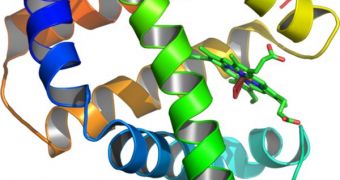A group of investigators at the Lehigh University is hard at work for developing a new type of nanodevice that would be capable of addressing the effects of cardiovascular system conditions such as thrombosis, atherosclerosis and stroke.
Lead researcher Xiaohui Zhang is hoping to achieve this by combining concepts from biology, physics and immunology in a single device. The expert is an assistant professor of mechanical engineering and mechanics at Lehigh, and a faculty member in the bioengineering program at the university.
The scientist leads the interdisciplinary research team that is working towards figuring out how to deliver certain drugs only to specific areas of the human body. He explains that the device currently being developed is only a few tens of nanometers in diameter.
In order to do this, the team is now seeking to advance their understanding of a basic cellular mechanism called mechanosensing, which deals with how mechanical stimuli trigger responses in living cells. This is very important for tissue development and heart disease progression, Zhang adds.
“Of the three basic ways that cells communicate with each other – chemical, electrical and mechanical – the last is by far the least understood,” the investigator explains. He adds that figuring out how forces affect cells is very difficult, since the former only act at a molecular level.
This makes the tiny forces extremely hard to monitor, manipulate and measure. In order to be able to study how molecules deform in response to mechanical stress, Zhang and his team are using a scientific observation technique, called single molecule force spectroscopy.
The approach involves the use of optical tweezers. These sensitive devices can be used to probe molecules such as proteins, applying very tiny forces on their surface. Advanced microscopes are then used to analyze how the molecules react, nearly in real-time.
One of the most important actors in ensuring that signals are transmitted across cellular membranes is the protein integrin, so the team focuses its studies on this molecule. Integrin acts like a mechanical switch because its shape is deformed when mechanical stimuli are applied to it.
“When you put a drug in the bloodstream, it disperses throughout the body. A nanodevice would be able to carry a drug through the bloodstream to a specific location. When activated by mechanical stimuli, it would undergo a shape change and release its preloaded drug,” Zhang explains.
“The real excitement of this project is that we’re trying to understand nature. That requires an interdisciplinary approach to determine how the molecule works. There’s no better place to do this than at Lehigh,” he concludes.

 14 DAY TRIAL //
14 DAY TRIAL //